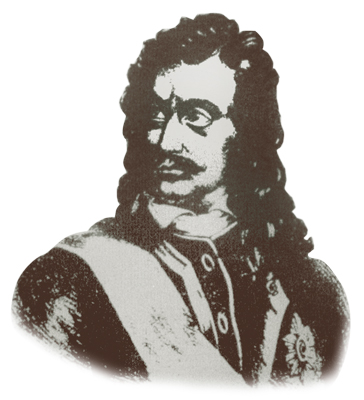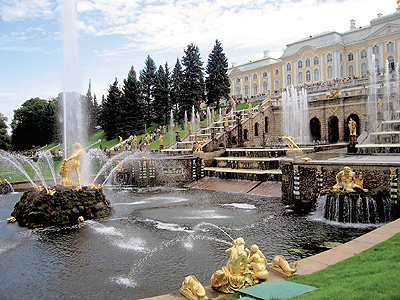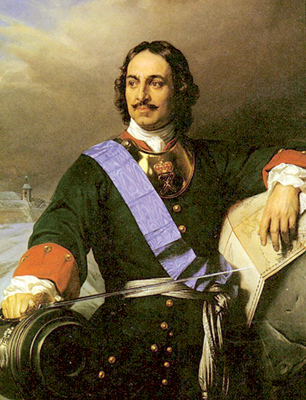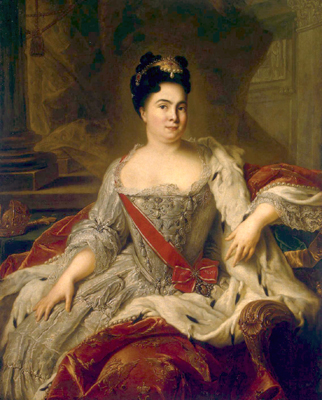Life, novels
COUNT SAVA VLADISLAVIĆ (1668-1738), THE IMPERIAL ADVISOR AND THE TRUSTING DIPLOMAT OF PETER I OF RUSSIA, THE MOST POWERFUL SERB OF THE 18TH CENTURY
A Man of a Special Mission
A gifted man from Herzegovina, very educated and very clever in “agile games of high politics”, made peace with the Sultan in Pruth for the Russian emperor, a pact of friendship with the Chinese emperor in Peking, an agreement with the pope in Rome, a military union with the mighty prince of Moldova in Jash. He formed the Russian Intelligence Agency. On the slave market in Tsargrad, while he was visiting, he bought a young man from Ethiopia to the Russian emperor, who will become the grand-grand father of Alexander Pushkin. In Siberia, he formed a town in which there is a church dedicated to Saint Sava of Serbia. He never forgot his people, his language and his faith. He is buried by his three daughters in the Holy monastery of Alexander Nevsky in St. Petersburg
By: Jovo Bajić

He was one of the most powerful people in Russia in the first half of the 18th century and one of the founders of Serbian and Russian cultural relations. The great Russian rulers, Emperor Peter I and Katarina I had great confidence in Sava Vladislavić, their extremely important advisor and diplomat. This unusual man is mentioned by the name of Raguzinski in Russian sources.
For the Russian empire, which also emphasizes Jovan Dučić, Sava Vladislavić managed very important financial and diplomatic work: “For one quarter of a century, he was involved in all important events of the Russian empire: he made peace with the sultan in Pruth for the Russian emperor, a pact of friendship with the Chinese emperor in Peking, an agreement with the pope in Rome, a military union with the mighty prince of Moldova in Jash. But Vladislavić was the first Serb who gained the trust of Orthodox Russia and Peter I at the end of the dark 17th century, which was very important for us, for liberation the Serbian people and the Balkans; this was unknown to the Serbian people. He was the first to mention the Serbian problem in Russia as the main problem of the Balkans.”
It is not sure where exactly lived his ancestors. Dučić claims that he originates from a medieval noble family Vladislavić from the vicinities of Gacko, and that the tower of his ancestors was between the villages Jasenka and Berušnica. In historic sources, Sava’s father Luka was mentioned as a man close to St. Vasilije of Ostrog, who was his contemporary. Citing the letter of a consul from Dubrovnik in Tsargrad, Luka Barka, Gligor Stanojević claims that Sava was born in Foča, where his brother Živko lived. It is also probable that Sava was born in Herceg Novi, Gacko or maybe Dubrovnik.
It is also not sure when he was born. Dušan Sindik cites a Russian source after which Sava was born on January 16/27th, in 1668. In the Great Soviet Encyclopedia he was mentioned as Raguzinski Vladisavljević Sava, born around 1670, while Jovan Dučić claimed that he could have been born in 1664.
Before he turned 20, Vladislavić found himself in Dubrovnik where he got great education, besides his skills as a merchant. While he was still young, merchant business took him to Tsargrad in 1698, where he finished important business for the people of Dubrovnik, as a man of trust. His diplomatic carrier, as Dučić claims, began in 1699, when he met the Patriarch of Jerusalem in Tsargrad, a friend of the Russian people, who recommended him as a man of trust to the Russian diplomat Emilian Ivanovich Ukraincov, in Tsargrad. The services of Sava Vladislavić were useful for some other Russian ministers in the Porte.
PUSHKIN FROM ETHIOPIA
 The connections of the merchant Sava Vladislavić with Russian diplomats were known to the Turkish authorities, so the Russian Minister Petar Andrejević Tolstoy decided to move Sava to Russia for some time in 1702. He was presented as a merchant in Moscow, and then he went north, to the Baltic, where he met the Russian Emperor Peter I in a military camp Schlisselburg. In 1704, Emperor Peter I sent him back to Tsargrad, for a short secret mission. After his return to Russia, he moved to Moscow, and his brother Jovan came with him, with his four sons. The connections of the merchant Sava Vladislavić with Russian diplomats were known to the Turkish authorities, so the Russian Minister Petar Andrejević Tolstoy decided to move Sava to Russia for some time in 1702. He was presented as a merchant in Moscow, and then he went north, to the Baltic, where he met the Russian Emperor Peter I in a military camp Schlisselburg. In 1704, Emperor Peter I sent him back to Tsargrad, for a short secret mission. After his return to Russia, he moved to Moscow, and his brother Jovan came with him, with his four sons.
Sava Vladislavić brought one young man from Ethiopia to Moscow, whom he bought on a slave market in Tsargard. He gave him to Peter I. The Emperor was happy for the gift; he called the young man Peter, after himself and he sent him to get an education. This man from Ethiopia was the grand grand-father of the great Russian poet Alexander Pushkin. Even Alexander Pushkin was aware of that fact, from which originates his special affection for the Serbian people.
Among many reports which Count Sava Vladislavić brought was the manuscript called The Secret Description of the Black Sea. For his favors, Emperor Peter I awarded him giving him a castle in Pokrovka, in Moscow, and the right to trade on Asov, in Ukraine, as well as abroad. During the historic battle near Poltava in 1709, in which the Russian army defeated the Swedish King Carlo XII, Sava was responsible for the quartermaster corps. He successfully organized supplying the Russian army with teams of animals through impassable roads. For the successfully done work, Peter I awarded him with properties in Ukraine. He got a high rank of a court advisor for the question of Orthodox East.
Soon came preparations for the war against Turkey, and there was not enough money in the state funds. Sava made a plan of filling in the imperial funds, creating and making a successful monetary and tax system carrier. Peter I awarded him for it.
Taking a high position on the Russian court and getting closer to Emperor Peter I, Vladislavić used his new positions for the good of the Serbian people. He planned to direct the attention of the Emperor of the tragic position of the Serbs on the Balkans who live in Turkey. As Jovan Dučić says, “he was the first to emphasize the Serbian problem in Russia as the main problem of the Balkans”.
THE IMPERIAL VIEW OF THE BALKANS
 A great opportunity for liberating the Serbs from Turkish slavery Sava saw in the forthcoming Russian-Turkish war, from 1710. He thought that this war should include Christians from the Balkans, especially its compatriots Serbs and Albanians who are Christians, and they would upraise when Russian military operations against the Turks in Moldova begin. He never suspected the readiness of Serbs to take arms in their hands. If the Russian people would benefit from the war, the Serbs would benefit as well, and the Serbian question would be seriously emphasized in Europe. A great opportunity for liberating the Serbs from Turkish slavery Sava saw in the forthcoming Russian-Turkish war, from 1710. He thought that this war should include Christians from the Balkans, especially its compatriots Serbs and Albanians who are Christians, and they would upraise when Russian military operations against the Turks in Moldova begin. He never suspected the readiness of Serbs to take arms in their hands. If the Russian people would benefit from the war, the Serbs would benefit as well, and the Serbian question would be seriously emphasized in Europe.
The plan of including the Christian people of the Balkans in this conflict, for which many historians think that it was created by Sava Vladislavić, was very simple. It was expected that besides Orthodox Serbs, the uprising on the Balkans would include Catholics who live in the area, as well as Albanians of Christian religion. In that case, it seems that they did not count on Bulgarians and Greeks. It was decided to send two disguised Russian officers of Serbian origin among Balkan Christians, especially the ones in Montenegro – Colonel Mihailo Miloradović, the descendant of the famous family Hrabren from Herzegovina and Captain Ivan Lukačević, born in Podgorica.
The uprising of Christians from the Balkans should have been harmonized with Russian military operations in the forthcoming war against the Turks on the Black Sea. For the occasion, the letter of Peter I was prepared, which was probably written by Sava Vladislavić. He turned to “the most holy Metropolitan, the sublimed and esteemed gentlemen governors, captains, princes and dukes, and all Christians of Greek and Roman religion”. He asked them to uprise. It was also the first attempt of entering Russia into the political event of the Balkans.
In the middle of July 1711, Miloradović came to Cetinje, and gave a letter of Peter I to Bishop Danilo and his brother Luka Petrović. The letter was read on St. Vid’s Day. Aggressive people of Montenegro quickly answered the Russian Emperor, and the uprising included some tribes from East Herzegovina. The uprisers had some success in the beginning, the got closer to the ramparts of the fortified towns of Nikšić and Trebinje, but they had no cannons to siege the fortifications.
The Catholic never answered the invitation. The people of Venice, as well as the people of Dubrovnik, looked at this uprising with suspect. While the uprising was rising, and the uprising forces seized gorges and Turkish fortifications, the Russian-Turkish war finished with the defeat of Russia and the peace treaty signed on the River Pruth. The peace treaty was dictated by Turkey. During negotiations about the war, Serbs were never mentioned. Several months later, the uprisers learned about the result of the finished Russian-Turkish war, so Miloradović and Lukačević secretly deserted the area in 1712 and went to Russia.
The Turkish state decided to punish the uprising citizens, to burn the monastery of Cetinje and to catch the leaders of the uprising, along with Mihailo Miloradović and Bishop Danilo. The first campaign of the Turkish army happened in 1712. After that, in 1714, the other Turkish punishment campaign was organized, led by Numan-Pasha Ćuprilić, but the uprising leaders could not catch him.
THE BORDER GUARD OF THE TWO BIGGEST EMPIRES
 For some of his family obligations, and some Russian state business in Venice and Rome, Sava visited his old homeland Herceg Novi, where some members of his family resided, and Dubrovnik, whose interests he protected in Tsargrad and in Russia. He first came to Venice from Moscow in 1717, and then in Dubrovnik. He tried to get permission from the Dubrovnik Senate to build an Orthodox Church, but he never made it. He left Dubrovnik in a very bad mood, and then he went to Herceg Novi. He met his family, he donated some orthodox churches. Then, he left for Venice. For some of his family obligations, and some Russian state business in Venice and Rome, Sava visited his old homeland Herceg Novi, where some members of his family resided, and Dubrovnik, whose interests he protected in Tsargrad and in Russia. He first came to Venice from Moscow in 1717, and then in Dubrovnik. He tried to get permission from the Dubrovnik Senate to build an Orthodox Church, but he never made it. He left Dubrovnik in a very bad mood, and then he went to Herceg Novi. He met his family, he donated some orthodox churches. Then, he left for Venice.
In Venice, Vladislavić married a 22-year-old Virgilia Trevisan (some call her Vergilia, and Dučić call her Virginia), from one of the most noble families of Venice. In the time of his marriage, Sava was fifty years old. Besides getting married, one of the reasons for which he came to Rome was to make an agreement between the Holy See and Russia. Vladislavić met Pope Clement XI and he made the plan for the agreement, but the Pope suddenly died and the job was left unfinished.
For the work he had done in Rome and Venice, Sava was awarded the highest dignity in 1722, being proclaimed a Russian nobleman. Before that, according to his noble Serbian origin, he got the title of a count from Venice. The Russian Empress Katarina I gave him new property. These acknowledgements represented the stimulus for new assignments for Vladislavić given by Peter I. Following the advice of Peter’s friend, the German philosopher Leibnitz, the Emperor decided to send an ambassador to China, and Sava Vladislavić was the most convenient man for the task. Given that Peter I died in the meantime, the decree of making Sava Vladislavić the ambassador in China was signed by Empress Katarina I in 1725. Vladislavić also completed this mission with success, marking a border between Russia and China, six thousand kilometers long. Vladislavić’s manuscript witnesses his mission and time spent in this great country called “Secret Report on Power and Situation of the Chinese Empire”.
Before he died, Vladislavić survived a great tragedy. His mother died, Nun Teofanija, and all of his three daughters that he had with his young wife Virgilia. His oldest daughter Ana was christened by Ana Petrovna, the daughter of Emperor Peter I. He died on June 17th 1738, and he was buried beside his mother and three daughters in Church of the Annunciation in the monastery of Alexandar Nevsky in St. Petersburg. In the last moments of his life, Sava Vladislavić was thinking about the Serbian people. In his will, he ordered his nephew and heir Mojsije Ivanovič to “send two chests full of Slavic books to Serbian countries”.
***
Town founder
In the time of bordering two great empires – the Russian and the Chinese – Vladislavić got the right to build fortifications in Siberia, in the Far East, such as Selingiskoy and Chkoniskoy, and on the Day of the Holy Trinity in 1727, which is very important for the Serbs, he founded the town Troickosavsky, in which he built the church dedicated to St. Sava of Serbia.
***
“The Kingdom of Slavs”
Using his close relations with the Emperor Peter I, Count Sava Vladislavić intended to show his affection for the Serbian people on a cultural plan, suggesting Peter I to translate the book The Kingdom of Slavs by Mavra Orbin into Russian, printed back in 1601 in Pesaro in Italian. Peter I was interested in this book.
Sava Vladislavić started translating Orbin’s work into Russian, which included the most complete history of Serbs and other people of the Balkans, The book appeared in Russian in 1722. After this book, the Russians started understanding the ethnic and historic conditions in the Balkans and to differ Slavs from Greek people. From this translation, facts were taken by many other Serbian historians Vasilije Petrović and Jovan Rajić. It especially influence Bulgarian historians; Pajsije of Hilandar wrote his History of Slavs and Bulgarians after it.
***
The report of Bishop Zmajević
The Bishop of Bar Andrija Zmajević informed his superiors about the rebel of the Serbian tribes against the Turks in the summer of 1711: “An unusual war happened on these borders. Orthodox people, Turkish citizens, declared war to their ruler in order to help the Russians.” According to Bishop Zmajević’s opinion, the victory of the Orthodox over the Turks was the greatest loss for the Catholic people.
|
